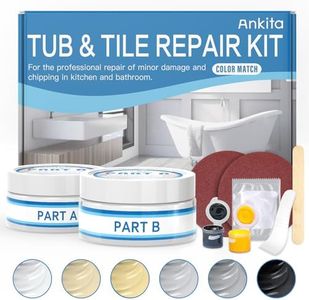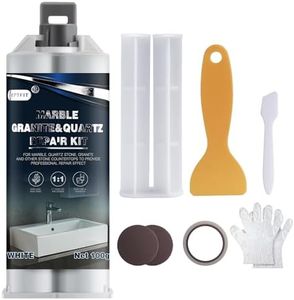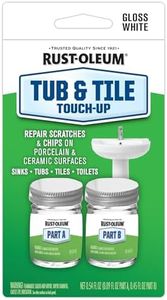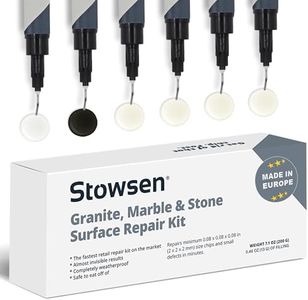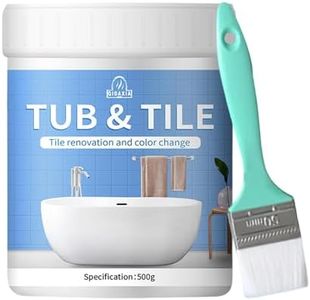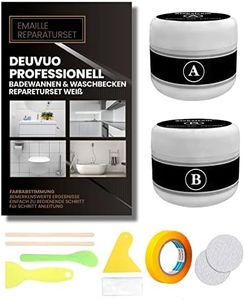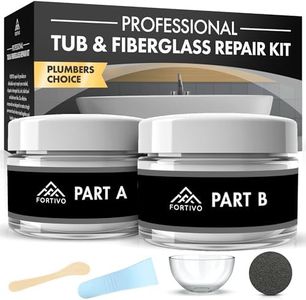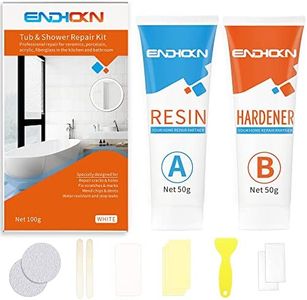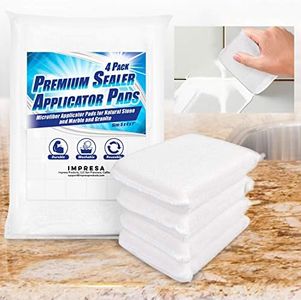We Use CookiesWe use cookies to enhance the security, performance,
functionality and for analytical and promotional activities. By continuing to browse this site you
are agreeing to our privacy policy
10 Best Tile Repair Kits
From leading brands and best sellers available on the web.Buying Guide for the Best Tile Repair Kits
Choosing the right tile repair kit is about understanding the type of damage you want to fix and matching it with a product that suits your tiles. Whether you're dealing with cracks, chips, or holes, there's a repair kit designed for your needs. Pay attention to the material compatibility and the finish you want to achieve. Buy a kit that offers easy application and results that blend well with your surrounding tiles. Always check that the color and texture match is as close as possible to avoid noticeable repairs.Material CompatibilityMaterial compatibility refers to what types of tiles the repair kit is made to fix – such as ceramic, porcelain, marble, or stone. This is important because using the wrong kit on your tile type can either not bond correctly or even damage the tile further. Always look for clear labeling or information about which tiles are compatible with the kit. If your home uses common ceramic or porcelain tiles, most standard kits will do. But for more specialized tiles like natural stone or terracotta, make sure the kit specifically mentions compatibility with those surfaces.
Color MatchingColor matching is about how well the repair material blends with the color of your existing tiles. Kits can come in pre-mixed colors, include several pigments for custom mixing, or offer clear options for gloss tiles. This is crucial for a seamless look. If your tiles are a standard color like white or beige, a basic kit will suffice. For patterned, uniquely colored, or vintage tiles, opt for a kit that allows for mixing custom shades, ensuring the patch isn’t obvious after fixing.
Finish TypeFinish type refers to whether the repaired area will be glossy, matte, or satin – matching the sheen of your original tiles. This matters because a glossy patch on a matte tile will stand out. Before buying, identify if your tiles are shiny or have a flat finish, then pick a kit that offers the same result. Some kits include the option to adjust the finish by buffing or using topcoat wipes.
Application MethodApplication method describes how the kit is used – such as fillers in tubes, two-part compounds to mix, or touch-up pens. The right method depends on the damage: simple pens or single-tube formulas are best for small scratches and chips; mixable compounds work better for large cracks or holes. If you want an easy, mess-free application, look for kits with tools or step-by-step instructions. For more involved repairs, don’t be afraid to use a kit that requires a bit of mixing if it promises stronger results.
Curing and Drying TimeCuring and drying time is how long the patch takes to harden and become water-resistant. If you need to use the area quickly, go for a kit with a fast curing time (often an hour or two). For high-traffic or wet areas (like the bathroom), use kits that mention longer cure times for extra strength, even if it means waiting overnight. Always check instructions to match your patience and schedule.
Durability and Water ResistanceDurability and water resistance indicate how well the repair holds up to everyday use, especially in kitchens and bathrooms. This spec is important if the tiles are in rooms exposed to moisture or lots of foot traffic. Look for kits that mention waterproof or long-lasting results if you want a patch that doesn’t need a redo quickly. Some kits are only suitable for small, out-of-the-way fixes, while others are made for floors and high-impact use.
